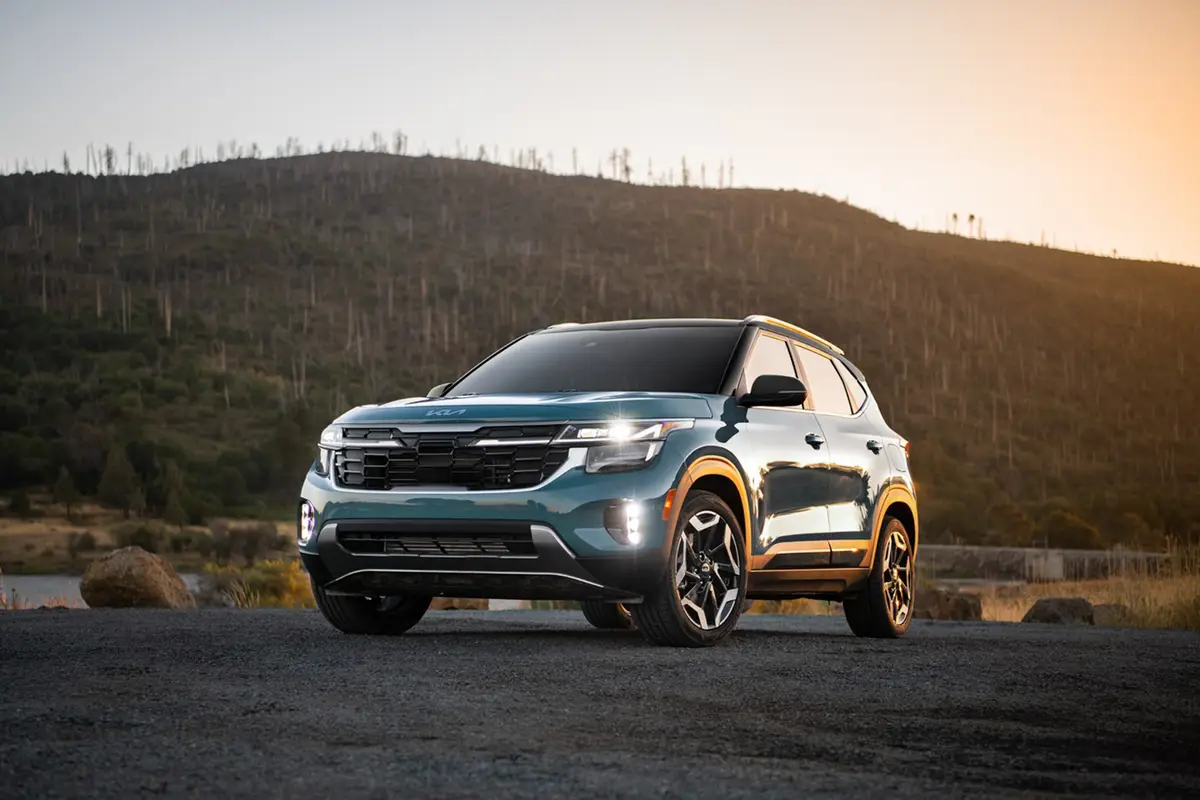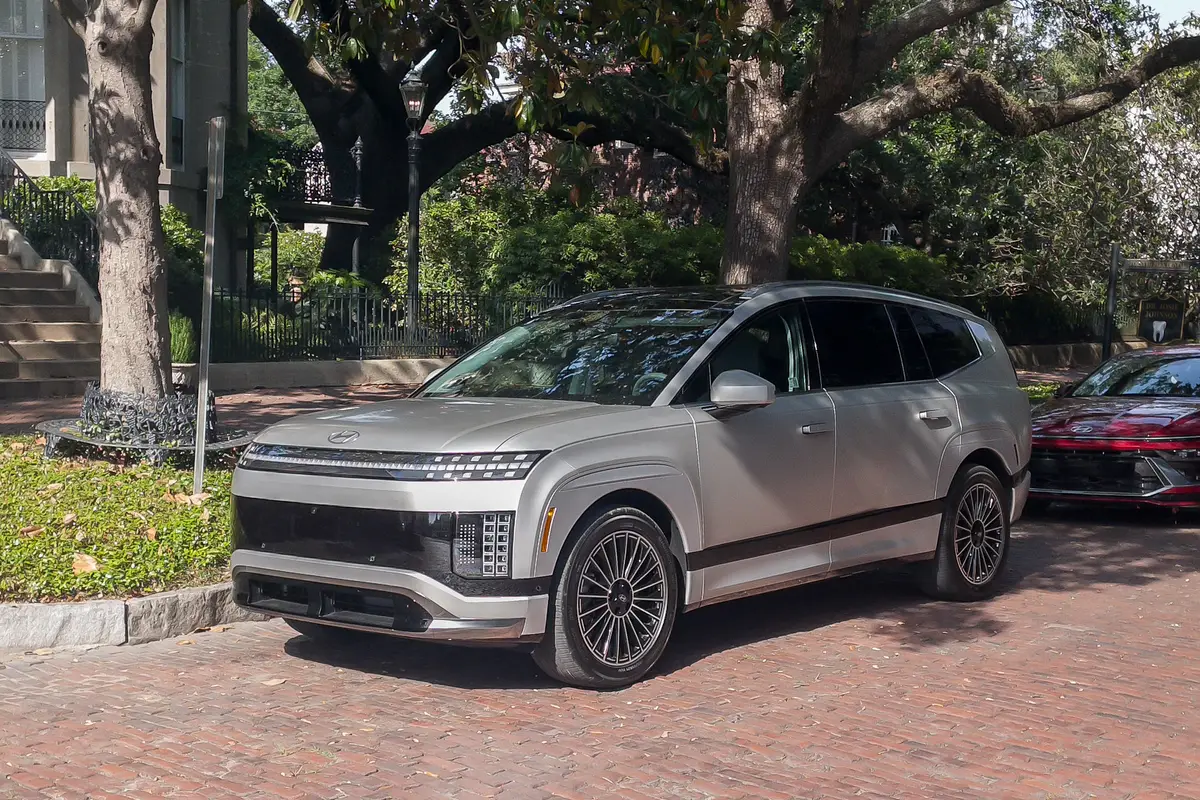washingtonpost.com's view
Leaner, Meaner and Greener
2004 Toyota Prius
First impressions were bad. The cues were wrong.
The Smart Entry ignition key wasn’t a key. It was a square electronic fob inserted into a dashboard slot — something more useful for punching a time clock than starting a car.
I pushed the power button but felt no life. I looked for the gearshift lever but found a joystick instead. It was my first hour in the 2004 Toyota Prius gas-electric sedan. I didn’t like it. But my distaste was short-lived.
The joystick became a joy, the easiest transmission-selection device I’ve ever used.
As with nearly everything in the Prius, the joystick lever operates “by wire.” That means it has no mechanical linkages.
Thus, gear selection is by indication. Move the joystick toward “reverse,” and it selects “reverse,” as indicated on the dashboard’s monitoring screen.
To get “park,” push a separate “P” button on the dashboard. The “P” turns green. You’re parked.
Acceleration is by wire, too. Sensors translate gas-pedal pressure into speed demands. The engine responds accordingly, precisely, unless you’re in a low-speed, slow-and-go traffic situation.
That’s when the Prius sedan’s electric motor takes over.
Think of the car as a computerized work-sharing device. Its 1.5-liter, 76-horsepower, four-cylinder engine works with its 67-horsepower-equivalent, permanent-magnet electric motor to give you the most speed for the least amount of fuel and tailpipe pollution.
The electric motor is powered by a battery pack. The battery pack is charged through regenerative braking — capturing kinetic energy that normally would be lost as brake heat and turning it into useable electricity to recharge the batteries.
No electric sockets are needed.
The gasoline engine and electric motor work together at highway speeds to provide maximum power.
Under slow-and-go driving conditions, the gas engine and battery-powered motor constantly trade responsibilities with one another — depending on how slow is “slow” and how much go is in “go.”
If “slow” becomes “stop,” as in waiting for a traffic signal, the gasoline engine snoozes while the electric motor hums. The motor carries lighter loads at higher speeds.
It all would be for naught in a car devoid of personality and attitude, or in one lacking ample seating and lots of cargo space. It would be meaningless in a car without a good sound system, or in one that simply couldn’t boogie.
But the 2004 Prius comes loaded and ready to run. It is bigger, more powerful and more accommodating than the previous model. It is more fuel-efficient, too.
The new car can scoot from zero to 60 miles per hour in a respectable 10 seconds, beating the 12.7-second jump from stop of the previous Prius.
The new Prius out-handles and outruns its two gas-electric rivals, the H onda Civic Hybrid and the Honda Insight two-seat coupe. Don’t believe me? Note to Honda: Let’s get ’em on a track and race.
The new Prius will smoke ’em!
Oops, that’s a bad choice of words. The new Prius doesn’t smoke. It has 30 percent fewer emissions than its super-clean predecessor. That means it yields 90 percent fewer smog-forming emissions than cars with conventional gasoline engines.
That’s impressive. But what’s more impressive is that this baby runs!
Nuts & Bolts
Downside: Pulling out of an urban garage, especially one without exit alarms, can endanger pedestrians. The Prius is so quiet in battery-only mode, some pedestrians don’t hear it coming.
Upside: The 2004 Prius goes to the top of my list for best city cars. It has a practically unbeatable combination of good mileage, low emissions, power and scootability.
Head-turning quotient: Totally twisted. Some people hated it and turned away. Others loved it nd begged for a turn behind the wheel.
Engine/motor/transmission: The Prius’s 1.5-liter, four-cylinder, 76-horsepower gasoline engine and its 67-horsepower-equivalent electric motor are linked to an automatic, continuously variable transmission — one that has no fixed gear ratios.
Ride, acceleration and handling: Excellent acceleration and handling. The ride is better than that in the original Prius, thanks to a longer wheelbase and better suspension for the new model.
Capacities: Seating room for four people. Cargo capacity is 16.1 cubic feet. Fuel tank holds 11.9 gallons of regular unleaded gasoline. Battery power comes from a package of 168 nickel-metal hydride batteries, each 1.2 volts creating a nominal 201.6 volts.
Mileage: The government says the Prius gets 55 miles per gallon in city-highway driving. In my mostly highway runs, I averaged 44 mpg.
Safety: Available side air bags for driver and front-seat passenger. A regenerative anti-lock brake system is standard.
Price: Base price is $19,995. Dealer invoice price is $18,411. Price as tested is $25,755, including $5,245 in options and a $515 destination charge.
Purse-strings note: Options include curtain/side air bags, navigation system, Toyota’s Smart Entry and Start key and ignition package, JBL premium audio with six-disc CD changer, and other items. Compare the new Prius with the Honda Civic Hybrid sedan and Honda Insight coupe.
Latest news



